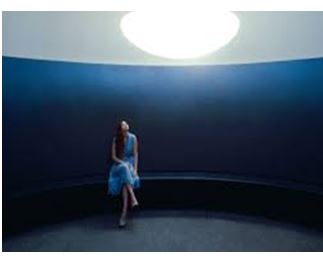Guest post by Leah Scott

To illuminate different lighting scenes, lighting designers typically need to install multiple troffers, recessed cans, focused spotlights, wall-washing lighting, or sconces to create a variety of appropriate lighting scenarios for occupants. Lighting controls that currently deliver light from multiple luminaires in real-time for specific activities are not adaptive, tunable, or are unable to deliver smooth lighting transitions without some type of human intervention with the lighting control system. The occupants’ ability to manage an ordinary lighting system for specific activities is limited. Even some of the most basic lighting control systems are relatively primitive and difficult to use. As lighting systems move to spectral tuning, fully autonomous controls are required, since there would be far too many settings, diverse scenes and activities, various fixture types, and spectral control factors involved for the average building occupant to operate.
Funded by the Building Technologies Office (BTO) of the Department of Energy (contract No. EE0009167), the Sculpt Program brings together industry and academia. Rensselaer researchers at the Lighting Enabled Systems and Applications Center (LESA) and the Center for Architecture Science and Ecology (CASE) are joined by LESA industry member Lumileds and global architectural design firm HKS, Inc. to develop a spatially adaptive tunable lighting control systems with expanded wellness and energy saving benefits. The aim of Sculpt is to address three main indoor lighting challenges: static or fixed-profile light fixtures cannot dynamically place lighting only where it is needed; tracking occupants with PIR motion sensors does not provide accurate activity specifications for added energy saving; and the emerging use of color tunable fixtures makes human control over the systems even harder.

The Rensselaer research team is utilizing tools such as Microsoft Kinect and Unity, an open-source gaming engine, to develop the autonomous control system in a VR simulation environment. The Microsoft Kinect is utilized to locate occupants, determine poses and gaze direction, and estimate activity type. By importing this information into Unity, both the occupants and lighting profiles can be visualized in real-time. Using this digital-twin simulation approach, developers are able to visualize many lighting scenarios and activities for deeper understanding of the human factors involved in dynamically adjusted illuminance profiles for autonomous occupancy-driven lighting control. The VR simulations help train the embedded lighting designer on how to dynamically redistribute light and adjust spectral power distributions as required to create smooth light transitions as occupants move and the scenes change. The VR tool also aids in the development of control algorithms that minimize glare and shadows while sculpting the illuminance to save energy.
Lumileds is providing the beam steerable, color-tunable light engines, and Rensselaer is developing the occupancy sensing and lighting control algorithms. HKS is applying its expertise in lighting simulations, energy use calculations, and circadian simulation tools that factor in the lighting’s spectral power distribution, occupant gaze, and the spectral reflectivity of room surfaces. The completed system will be deployed in LESA’s Smart Conference Room for calibration and performance evaluation during 2022.
“Just as the vision of a self-driving car will include an embedded expert driver, we are developing the concept of an embedded lighting designer for autonomous lighting systems,” says LESA Center Director Robert Karlicek. “The integration of advanced lighting systems, novel sensing platforms, and embedded intelligent control, has always been part of the LESA vision. Once the lighting system is smart enough to optimize illumination, its knowledgebase can be used to control other building systems removing control burdens from building occupants and managers that continuously learn how to further improve building energy efficiency, human comfort, productivity and wellbeing.”
Once deployed, the Sculpt System will serve as a testbed for the continued development of autonomous lighting and integrated building control systems. Researchers will also be able to document the evaluation of how digitally controllable vertical and horizontal illuminance using different spectral power distributions can improve circadian health. The testbed will also be used for the development and testing of novel (and lower cost) approaches to occupant location and pose sensing. The knowledge gained in the testbed will advance the improvement of occupant-centric control systems by providing comprehensive data for both lighting control as well as important building services such as HVAC energy reductions and other building management services. The sensing and control platform will provide a first glimpse of future sentient occupant-centric building management systems.





You must be logged in to post a comment.